Effect of Nd on Stacking Fault Energy in Pure Copper: A First-Principles and HRTEM Study
Abstract
1. Introduction
2. Materials and Methods
3. Results and Discussion
4. Conclusions
Author Contributions
Funding
Data Availability Statement
Conflicts of Interest
References
- An, X.H.; Wu, S.D.; Wang, Z.G.; Zhang, Z.F. Significance of stacking fault energy in bulk nanostructured materials: Insights from Cu and its binary alloys as model systems. Prog. Mater. Sci. 2019, 101, 1–45. [Google Scholar] [CrossRef]
- Li, L.L.; Zhang, Z.J.; Zhang, P.; Zhang, Z.F. A review on the fatigue cracking of twin boundaries: Crystallographic orientation and stacking fault energy. Prog. Mater. Sci. 2023, 131, 101011. [Google Scholar] [CrossRef]
- Hughes, D.A.; Hansen, N. High angle boundaries formed by grain subdivision mechanisms. Acta Mater. 1997, 45, 3871–3886. [Google Scholar] [CrossRef]
- Cottrell, A.H. Dislocations and Plastic Flow in Crystals; Oxford University Press: Oxford, UK, 1953. [Google Scholar]
- Hirth, J.P.; Lothe, J. Theory of Dislocations, 2nd ed.; John Wiley & Sons: New York, NY, USA, 1982. [Google Scholar]
- Thornton, P.R.; Mitchell, T.E.; Hirsch, P.B. The dependence of cross-slip on stacking-fault energy in face-centred cubic metals and alloys. Philos. Mag. 1962, 7, 1349–1369. [Google Scholar] [CrossRef]
- Zhang, M.Y.; Yang, J.C.; Huan, Y.; Liu, F. Oxide precipitation strengthening in Cu alloy modified with trace amounts of Nd during dynamic impact. Mater. Lett. 2024, 372, 137068. [Google Scholar] [CrossRef]
- Li, J.G.; Wang, N.; Liu, J.D.; Xu, W. Influence of rare earth elements (Y, La and Ce) on the mechanical properties and oxidation resistance of nickel-based superalloys: A critical review. J. Mater. Sci. Technol. 2024, 195, 9–21. [Google Scholar] [CrossRef]
- Wang, Z.G.; Song, C.M.; Zhang, Y.H.; Wang, H.; Qi, L.; Yang, B. Effects of yttrium addition on grain boundary character distribution and stacking fault probabilities of 90Cu10Ni alloy. Mater. Charact. 2019, 151, 112–118. [Google Scholar] [CrossRef]
- Wang, Z.C.; Zhang, C.M.; Li, S.L.; Song, K.X.; Zhou, Y.J.; Liu, Y.H.; Sun, J.J.; Cao, J. Refinement of eutectic structure and precipitates of Cu-20Ag alloy due to Y microalloying. J. Mater. Res. Technol. 2024, 33, 5518–5527. [Google Scholar] [CrossRef]
- Dalvand, P.; Raygan, S.; López, G.A.; Meléndez, M.B.; Chernenko, V.A. Properties of rare earth added Cu-12wt% Al-3wt% Ni-0.6wt% Ti high temperature shape memory alloy. Mater. Sci. Eng. A 2019, 754, 370–381. [Google Scholar] [CrossRef]
- Yu, X.Y.; Ren, J.W.; Gu, K.H.; Zhu, Q.W.; Cai, H.Y.; Zheng, L.Y.; Qiu, W.T.; Chao, G.H.; Gong, S. Synergistic improvement of mechanical properties and electrical conductivity of Cu-Fe alloys by rare earth metals Sc and Y addition. J. Alloys Compd. 2024, 979, 173569. [Google Scholar] [CrossRef]
- Zhao, X.; Wang, E.G.; An, B.L.; Zhang, L.; Guo, X.; Li, Y.C.; Ma, B.W.; Du, J.W.; Peng, T.; Li, L. Effects of Sc doping on microstructure and properties of high strength and high conductivity Cu-6 wt% Ag alloy wires with large section size for ultra-high pulsed magnet coils. Mater. Sci. Eng. A 2025, 927, 148038. [Google Scholar] [CrossRef]
- Wang, W.Y.; Zhu, J.L.; Qin, N.N.; Zhang, Y.F.; Li, S.Y.; Xiao, Z.; Lei, Q.; Li, Z. Effects of minor rare earths on the microstructure and properties of Cu-Cr-Zr alloy. J. Alloys Compd. 2020, 847, 155762. [Google Scholar] [CrossRef]
- Monkhorst, H.J.; Pack, J.D. Special points for Brillouin-zone integrations. Phys. Rev. B 1976, 13, 5188–5192. [Google Scholar] [CrossRef]
- Anisimov, V.I.; Aryasetiawan, F.; Lichtenstein, A.I. First-principles calculations of the electronic structure and spectra of strongly correlated systems: The LDA+ Umethod. J. Phys. Condens. Matter 1997, 9, 767–808. [Google Scholar] [CrossRef]
- Kresse, G.; Hafner, J. Ab initio molecular-dynamics simulation of the liquid-metal-amorphous-semiconductor transition in germanium. Phys. Rev. B Condens. Matter. 1994, 49, 14251–14269. [Google Scholar] [CrossRef] [PubMed]
- Kresse, G.; Furthmüller, J. Efficiency of ab-initio total energy calculations for metals and semiconductors using a plane-wave basis set. Comput. Mater. Sci. 1996, 6, 15–50. [Google Scholar] [CrossRef]
- Perdew, J.P.; Burke, K.; Ernzerhof, M. Generalized Gradient Approximation Made Simple. Phys. Rev. Lett. 1996, 77, 3865–3868. [Google Scholar] [CrossRef]
- Kresse, G.; Joubert, D. From ultrasoft pseudopotentials to the projector augmented-wave method. Phys. Rev. B 1999, 59, 1758–1775. [Google Scholar] [CrossRef]
- Dumitraschkewitz, P.; Clemens, H.; Mayer, S.; Holec, D. Impact of Alloying on Stacking Fault Energies in γ-TiAl. Appl. Sci. 2017, 7, 1193. [Google Scholar] [CrossRef]
- Klinger, M. More features, more tools, more CrysTBox. Appl. Crystallogr. 2017, 50, 1226–1234. [Google Scholar] [CrossRef]
- Hÿtch, M.; Snoeck, E.; Kilaas, R. Quantitative measurement of displacement and strain fields from HREM micrographs. Ultramicroscopy 1998, 74, 131–146. [Google Scholar] [CrossRef]
- Zhang, M.Y.; Yang, J.C.; Huang, C.Y.; Ying, P.Y.; Huan, Y.; Liu, F. Effect of microalloying rare-earth Nd on microstructure evolution and mechanical property of Cu alloy. Materials 2024, 17, 5112. [Google Scholar] [CrossRef] [PubMed]
- Zhang, X.; Cui, T.Y.; Zhang, X.; Liu, Q.S.; Dong, Z.Z.; Man, C. Effect of Nd addition on the microstructure, mechanical properties, shape memory effect and corrosion behaviour of Cu-Al-Ni high-temperature shape memory alloys. J. Alloys Compd. 2021, 858, 157685. [Google Scholar] [CrossRef]

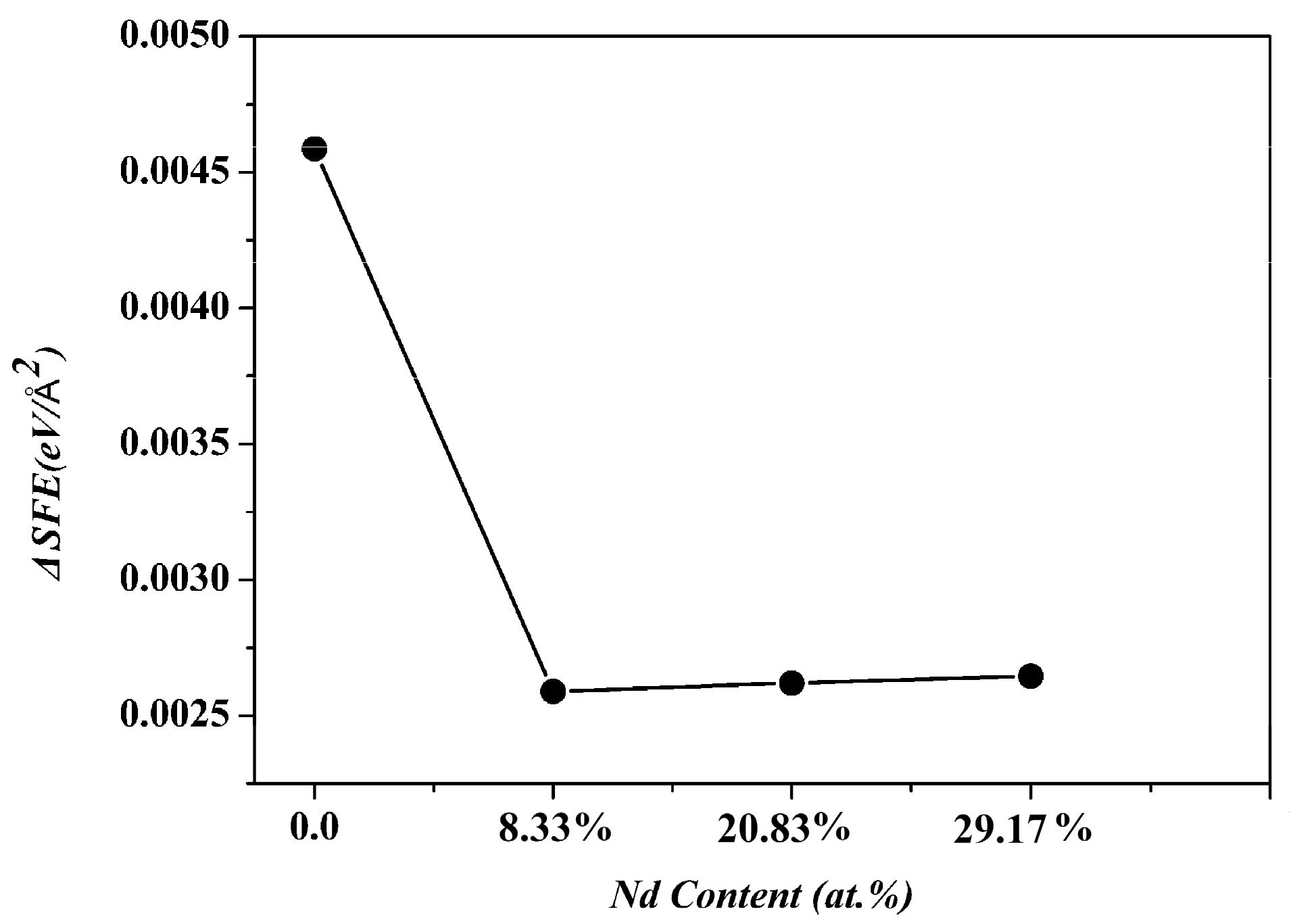
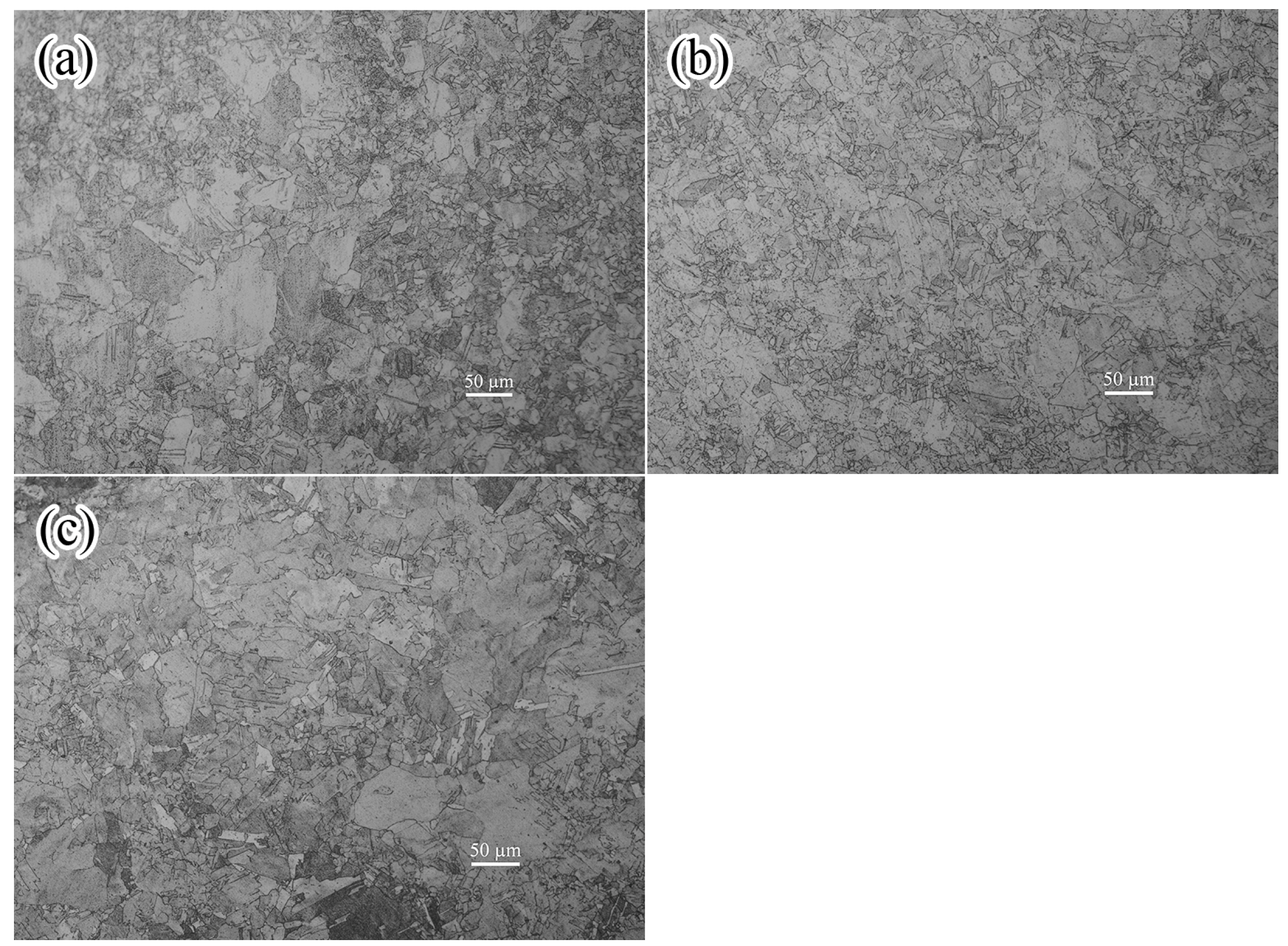
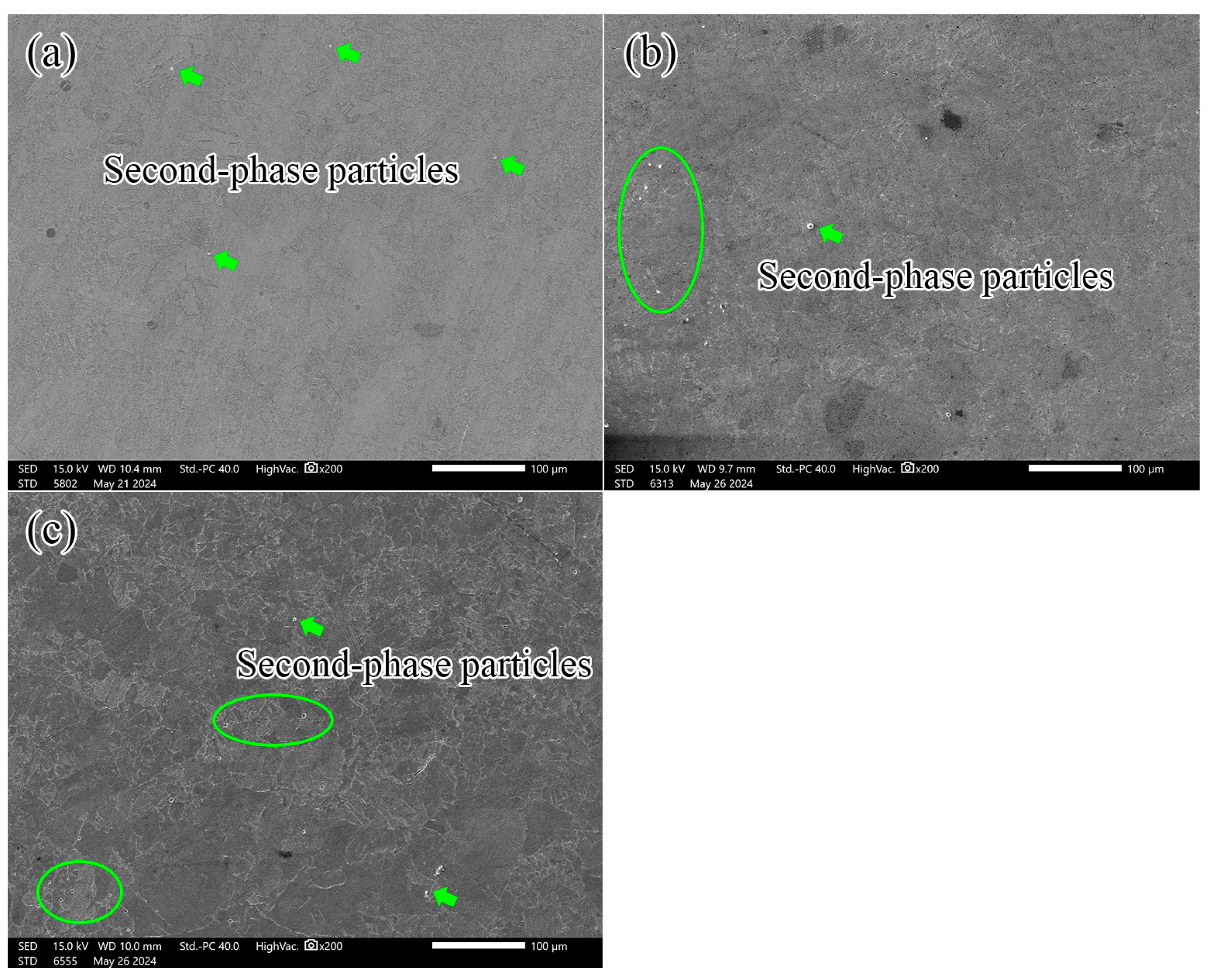
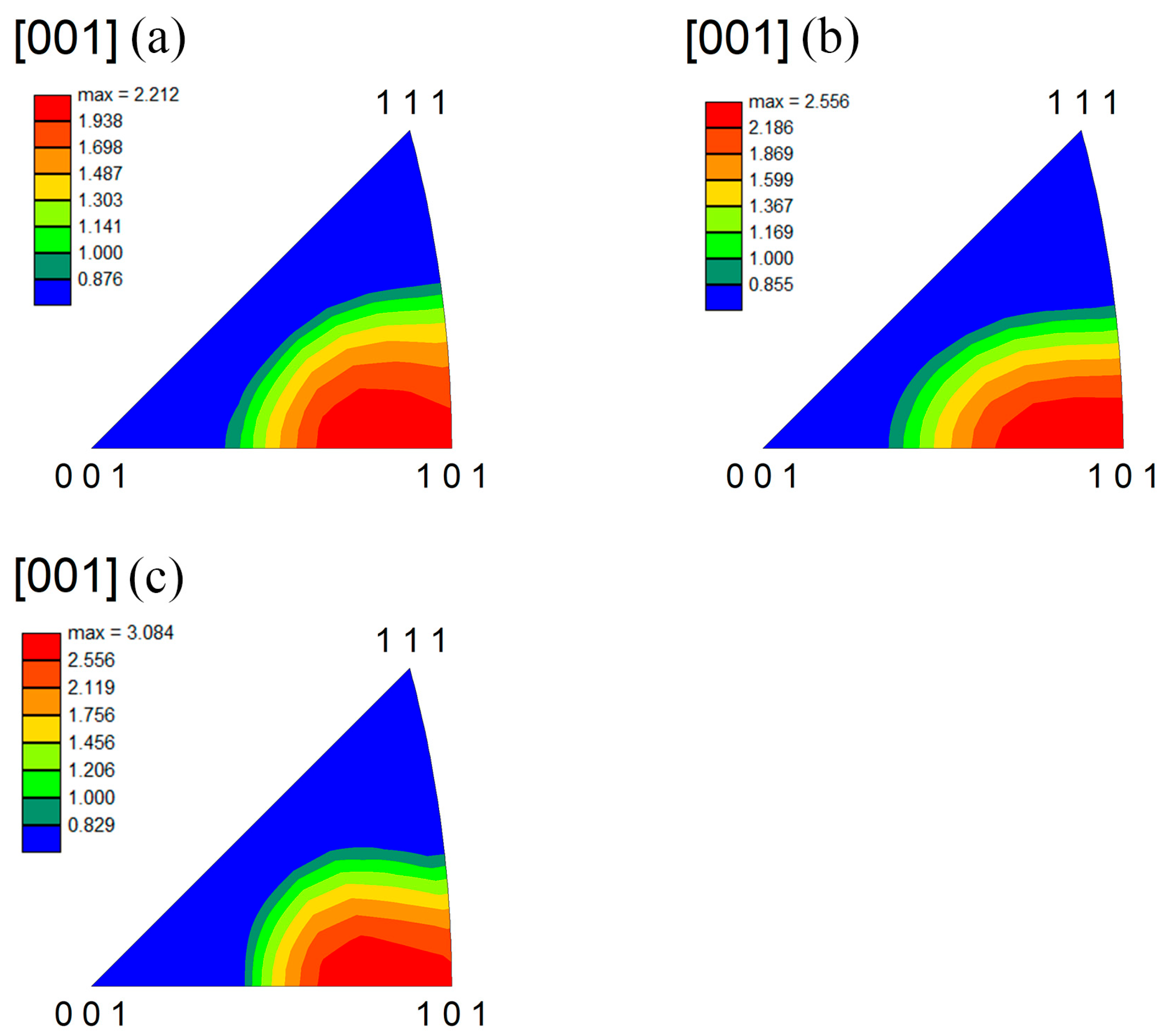
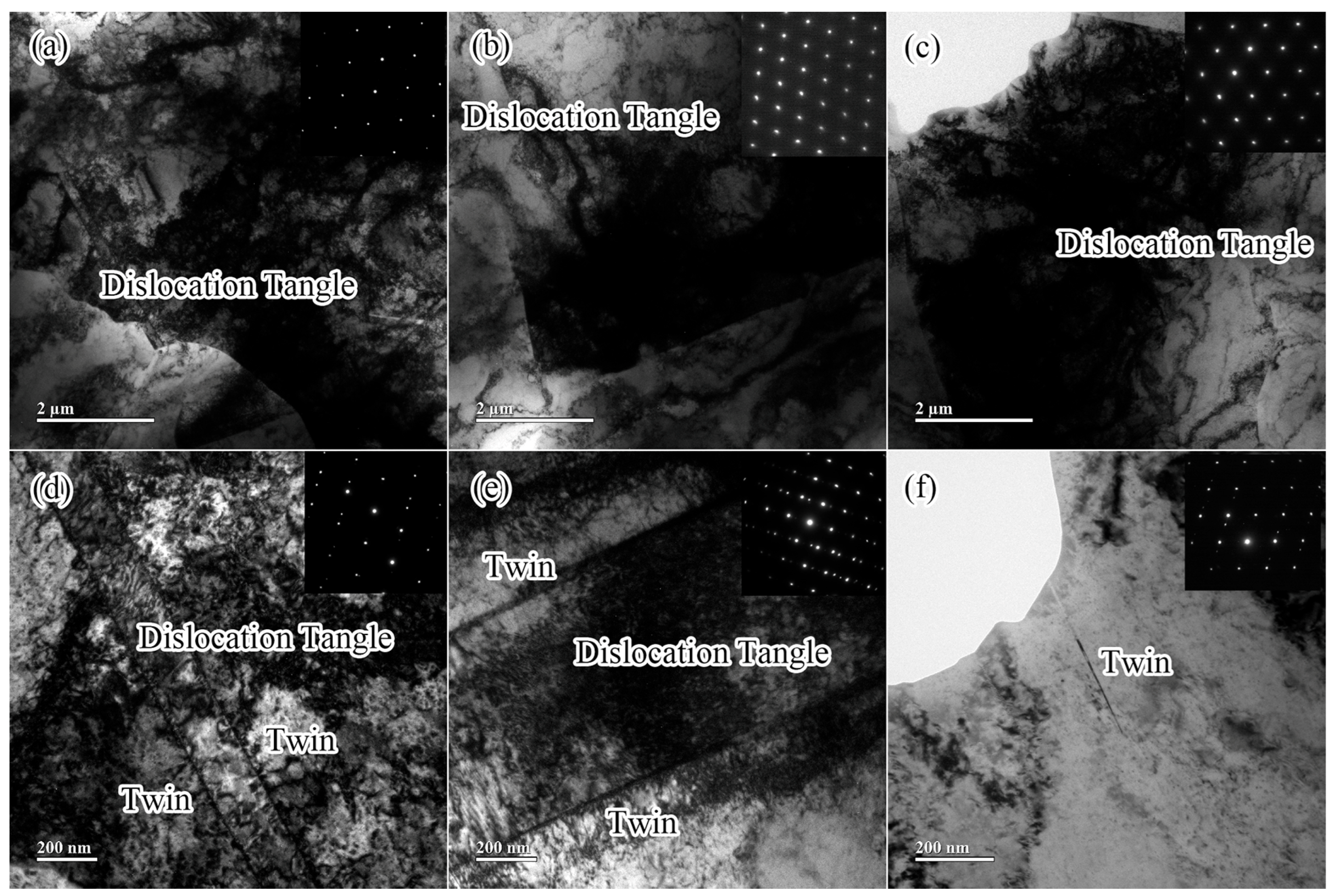
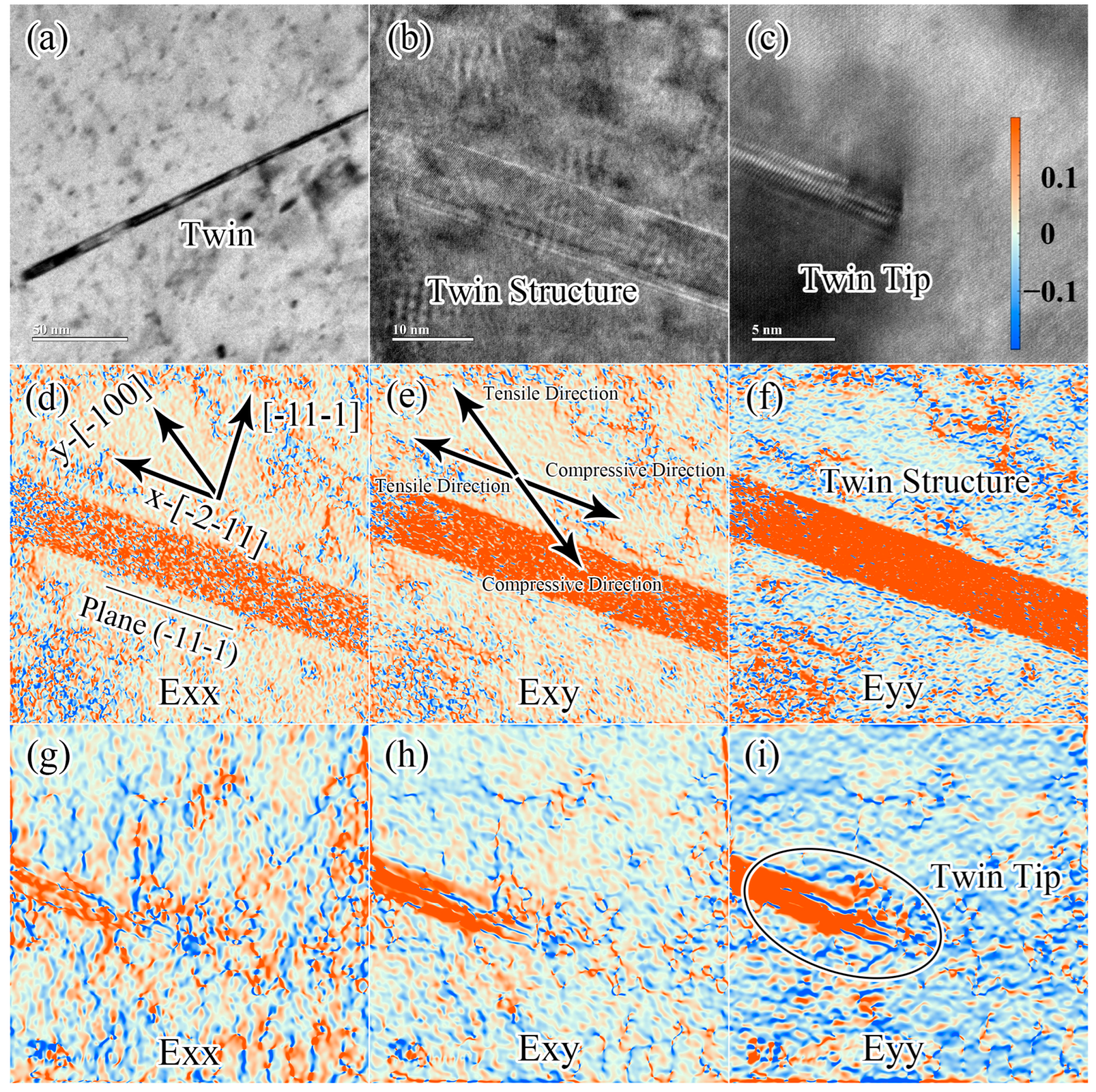
| Sample Number | Stress (MPa) | Strain (%) |
|---|---|---|
| Pure Copper | 445 | 0.12 |
| Cu-0.005 wt.%Nd | 522 | 0.11 |
| Cu-0.028 wt.%Nd | 554 | 0.13 |
Disclaimer/Publisher’s Note: The statements, opinions and data contained in all publications are solely those of the individual author(s) and contributor(s) and not of MDPI and/or the editor(s). MDPI and/or the editor(s) disclaim responsibility for any injury to people or property resulting from any ideas, methods, instructions or products referred to in the content. |
© 2025 by the authors. Licensee MDPI, Basel, Switzerland. This article is an open access article distributed under the terms and conditions of the Creative Commons Attribution (CC BY) license (https://creativecommons.org/licenses/by/4.0/).
Share and Cite
Zhang, M.; Li, Y.; Huang, C.; Ying, P.; Huan, Y.; Zhao, C.; Xiao, C.; Liu, F. Effect of Nd on Stacking Fault Energy in Pure Copper: A First-Principles and HRTEM Study. Alloys 2025, 4, 7. https://doi.org/10.3390/alloys4020007
Zhang M, Li Y, Huang C, Ying P, Huan Y, Zhao C, Xiao C, Liu F. Effect of Nd on Stacking Fault Energy in Pure Copper: A First-Principles and HRTEM Study. Alloys. 2025; 4(2):7. https://doi.org/10.3390/alloys4020007
Chicago/Turabian StyleZhang, Mingyi, Yang Li, Chongyuan Huang, Puyou Ying, Yong Huan, Chong Zhao, Chi Xiao, and Fei Liu. 2025. "Effect of Nd on Stacking Fault Energy in Pure Copper: A First-Principles and HRTEM Study" Alloys 4, no. 2: 7. https://doi.org/10.3390/alloys4020007
APA StyleZhang, M., Li, Y., Huang, C., Ying, P., Huan, Y., Zhao, C., Xiao, C., & Liu, F. (2025). Effect of Nd on Stacking Fault Energy in Pure Copper: A First-Principles and HRTEM Study. Alloys, 4(2), 7. https://doi.org/10.3390/alloys4020007







